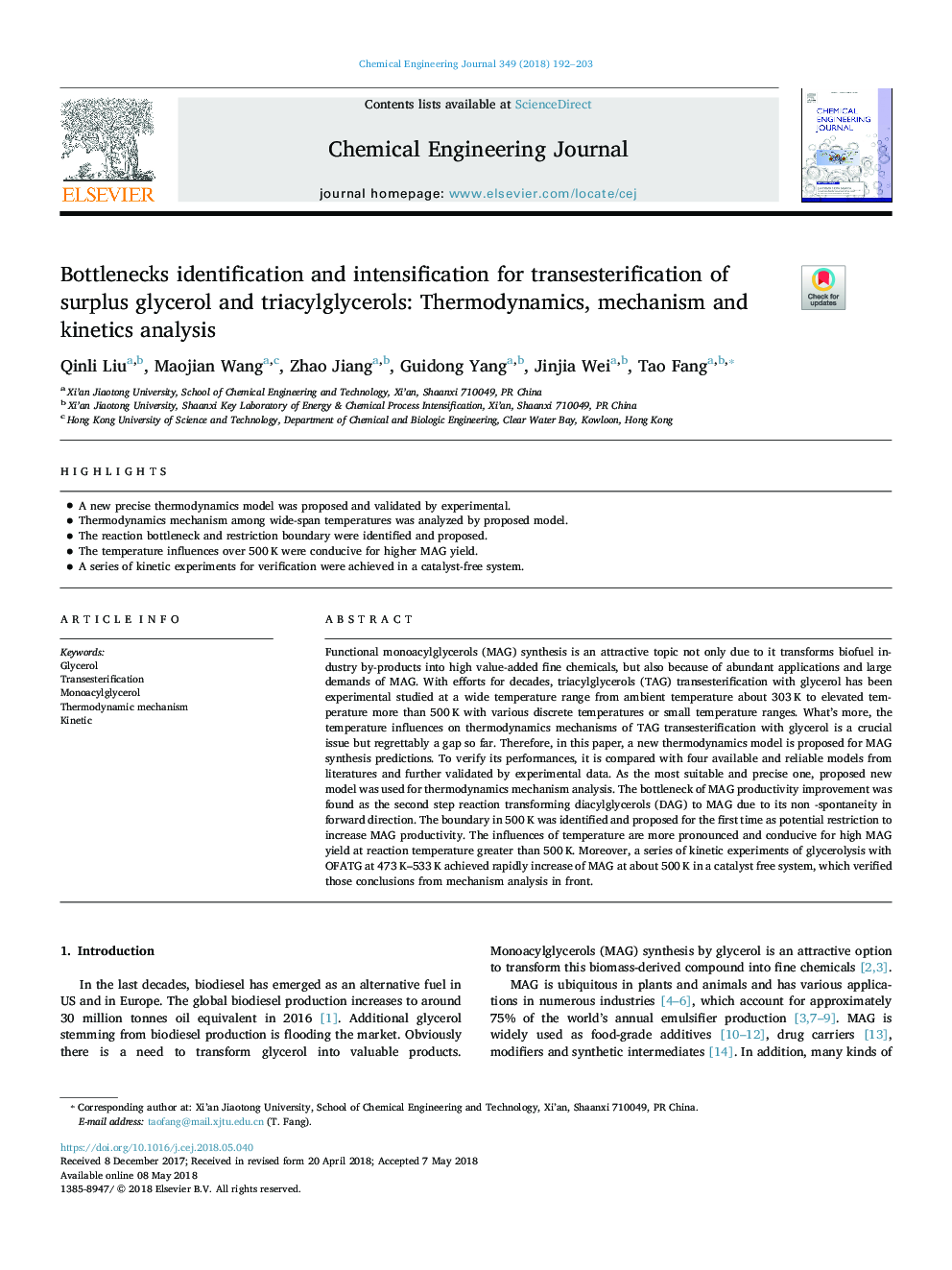| Article ID | Journal | Published Year | Pages | File Type |
|---|---|---|---|---|
| 6578566 | Chemical Engineering Journal | 2018 | 12 Pages |
Abstract
Functional monoacylglycerols (MAG) synthesis is an attractive topic not only due to it transforms biofuel industry by-products into high value-added fine chemicals, but also because of abundant applications and large demands of MAG. With efforts for decades, triacylglycerols (TAG) transesterification with glycerol has been experimental studied at a wide temperature range from ambient temperature about 303â¯K to elevated temperature more than 500â¯K with various discrete temperatures or small temperature ranges. What's more, the temperature influences on thermodynamics mechanisms of TAG transesterification with glycerol is a crucial issue but regrettably a gap so far. Therefore, in this paper, a new thermodynamics model is proposed for MAG synthesis predictions. To verify its performances, it is compared with four available and reliable models from literatures and further validated by experimental data. As the most suitable and precise one, proposed new model was used for thermodynamics mechanism analysis. The bottleneck of MAG productivity improvement was found as the second step reaction transforming diacylglycerols (DAG) to MAG due to its non -spontaneity in forward direction. The boundary in 500â¯K was identified and proposed for the first time as potential restriction to increase MAG productivity. The influences of temperature are more pronounced and conducive for high MAG yield at reaction temperature greater than 500â¯K. Moreover, a series of kinetic experiments of glycerolysis with OFATG at 473â¯K-533â¯K achieved rapidly increase of MAG at about 500â¯K in a catalyst free system, which verified those conclusions from mechanism analysis in front.
Related Topics
Physical Sciences and Engineering
Chemical Engineering
Chemical Engineering (General)
Authors
Qinli Liu, Maojian Wang, Zhao Jiang, Guidong Yang, Jinjia Wei, Tao Fang,
